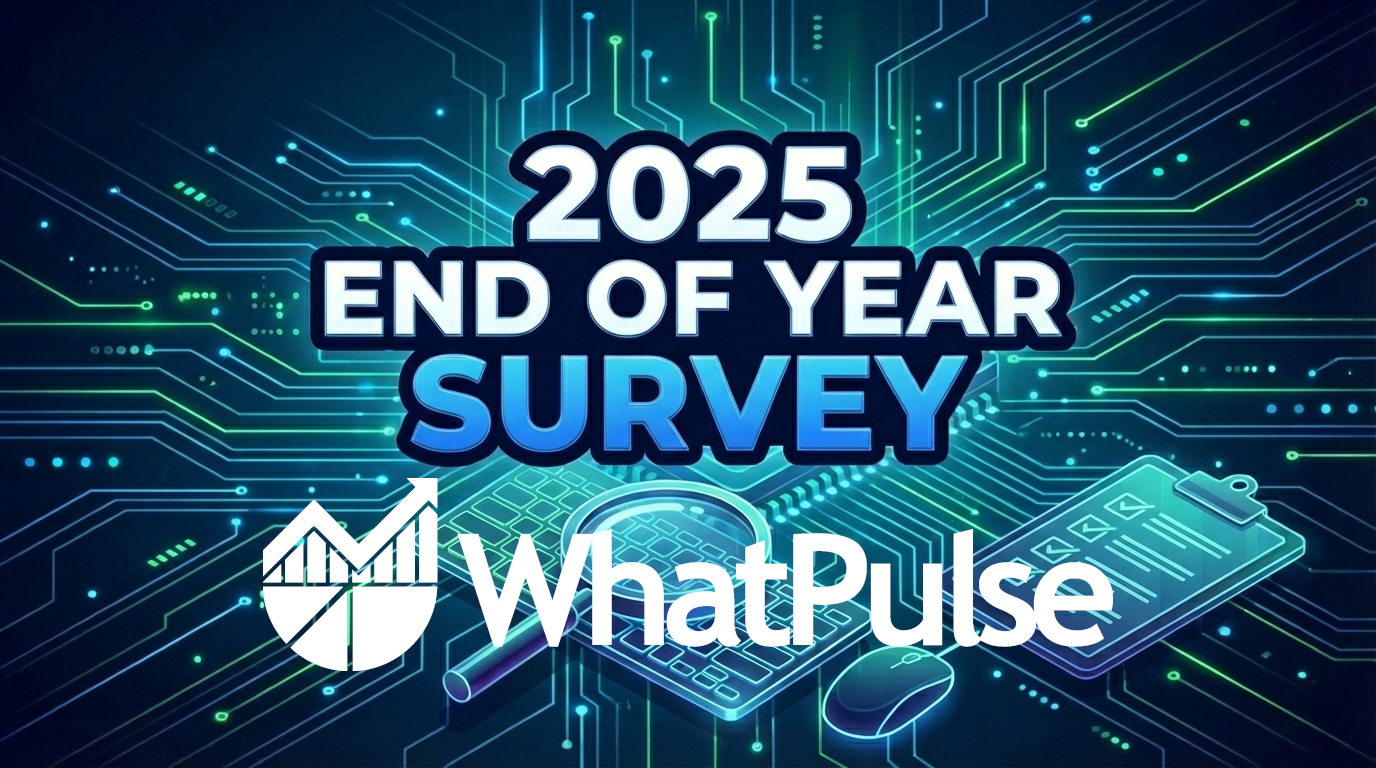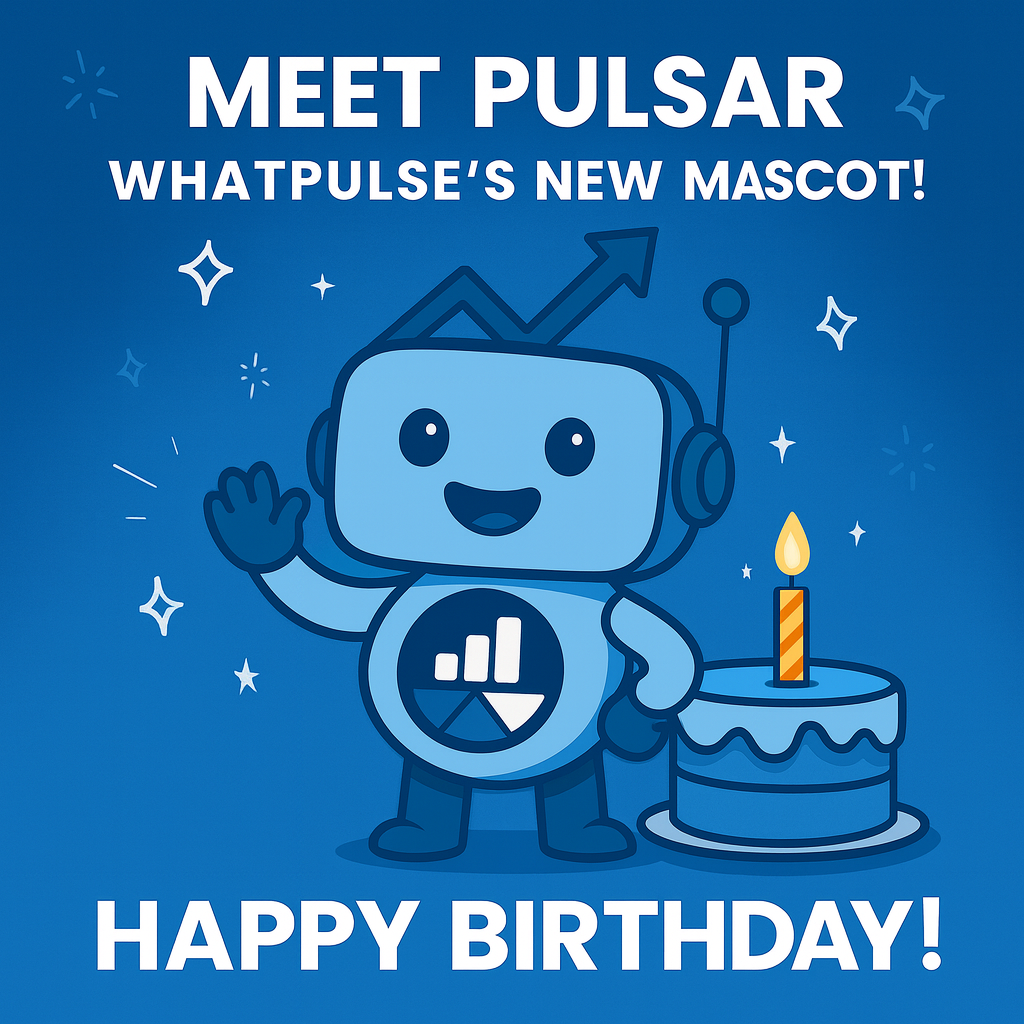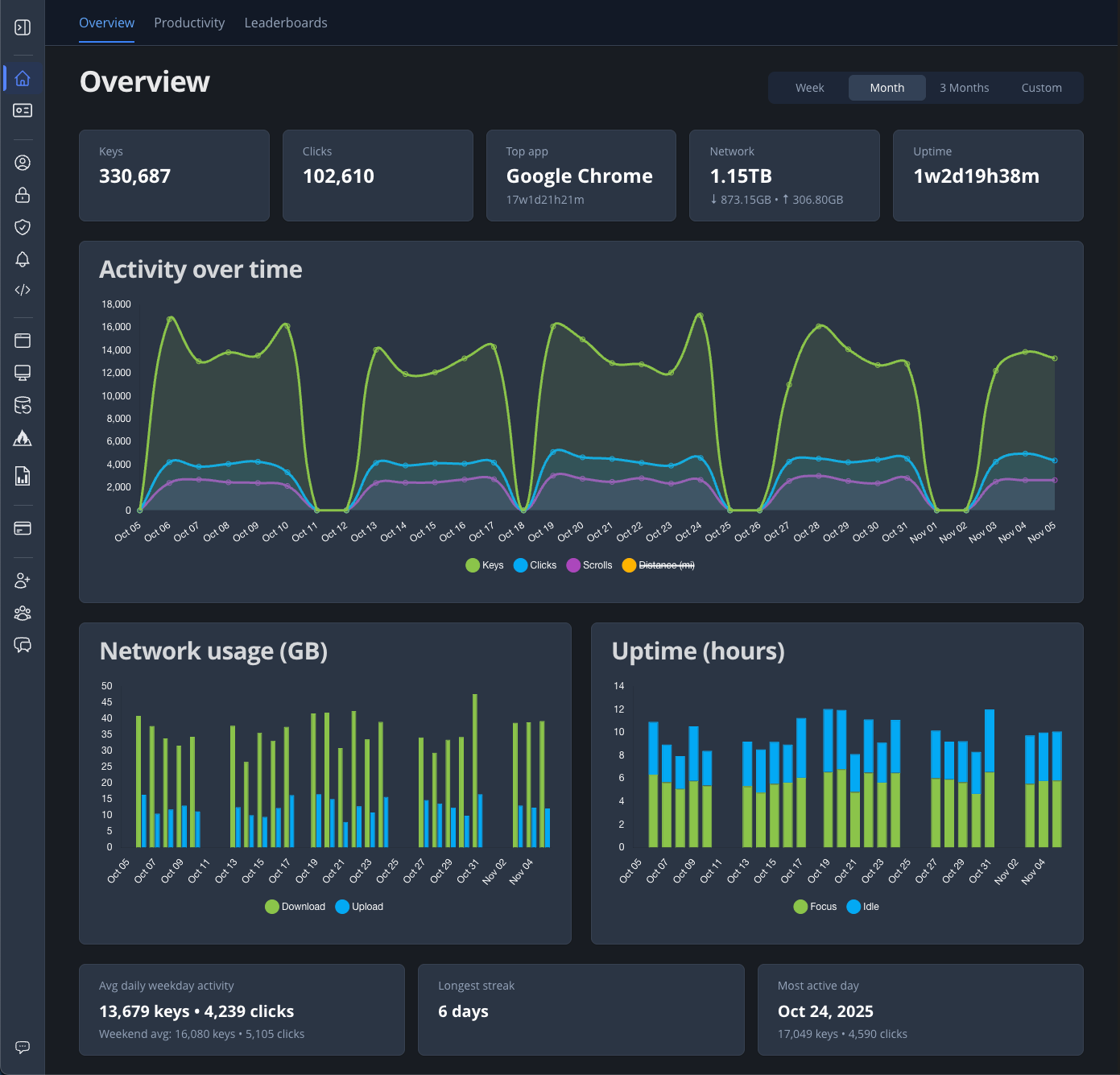As we wrap up another year of keys, clicks, and curious stats, we're diving into the planning for WhatPulse 2026. We'd like to hear from you. You're the one actually using the app every day, watching the stats climb, chasing badges, tweaking habits, or just enjoying the data rabbit hole. Your input helps us understand what's working, what's not, and what would make WhatPulse even more useful and fun next year.
This year's survey is a handful of questions and it helps us understand how you use WhatPulse, what features genuinely helped you, and where things could improve. We're exploring new ideas right now, like deeper habit tracking, more meaningful insights, smarter comparisons, and ways to make your profile actually do more. Your answers play a big part in deciding what lands first.
As a little thank-you, everyone who completes the survey gets entered into a raffle for one $50 digital gift card and five $20 gift cards. Not bad for a five-minute survey.
Thanks for being part of the WhatPulse community, your input really does shape where the app goes next.
👉 Take the survey here: https://whatpulse.org/surveys/the-end-of-year-pulse-check-2025



